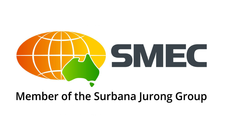African mining industry has strong potential for long-term growth
| African mining industry has strong potential for long-term growth | 16.71 KB | Download | |
| SMEC is extending a 220 kV substation in Botswana for a mining project. | 3.57 MB | Download | |
| Gerrit Lok is general manager, resources, Africa at SMEC | 993.06 KB | Download | |
| The slump in commodity prices has resulted in a dearth of Greenfield mining projects in Africa, says SMEC. | 1.96 MB | Download |
Consulting engineering company SMEC has an extensive presence in Africa, with 1 000 employees in South Africa and a further 450 in the rest of Africa. Its involvement extends mainly to NPI (Non Process Infrastructure) projects, including power, water, roads, bridges, urban development and geotechnical work.
“Our clients are typically governments or global institutions such as the World Bank. We focus on engineering and engineering supervision, feeding into most operating models, from EPCM (engineering, procurement and construction management) to EPC (engineering, procurement and construction,” Gerrit Lok, general manager, resources: Africa at SMEC, says.
A differentiator for SMEC in the marketplace is that, interestingly, it subscribes to both models. “If projects are not well defined and/or maybe subject to significant change, then we would prefer EPCM. However, for well-defined projects with a limited chance of significant change, EPC tends to be preferred.
Mixed project model
“From a risk perspective, EPC tends to be preferred by financiers. Current research on project surveys tends to show that a mixed project model yield optimal results. Fundamentally, if practiced correctly, EPCM should, however, deliver a lower capital cost, with all things being equal.”
Political stability, safety and health and security risks are common themes that “we continuously monitor internally and externally. Business risk challenges such as payment risks are also important, but this seems to be less of an issue due to our operating model and strong focus on having an established footprint in the countries we operate.
“Many companies see the lack of infrastructure as a huge stumbling block, but given our core skill sets, we look at this as an untapped market. The drawn-out processes in funding the larger strategic projects in African countries can be a challenge, and often results in lost opportunities,” Lok cautions.
Dearth of Greenfield projects
The downturn in the global commodities market has resulted in a dearth of Greenfield projects in Africa. “Focusing on the mining and oil and gas industries, I think the single largest factor impacting ‘go’ or ‘no go’ decisions are really the unpredictability of global commodity demand forecasts.”
Lok explains that the volatility in estimates over often short periods of time, coupled with questionable information on economic activity, especially from China, makes it very difficult for companies to make long-term commitments. “Secondly, there is a marked surplus in production capacity for most commodities, given the short- to medium-term demand forecasts.”
This trend is reflected in the marked drop in exploration budgets, which have declined anything from 13% to 50% from 2013 onwards. “It has, however, not dried up, and exploration programmes have become more focused,” Lok argues. “There also seems to be a preference for exploration in gold, copper, PGMs and nickel.”
African ‘hot spots’ for mining
This is because Africa is blessed with an abundance in this regard. “However, I like Tanzania, Ghana, Kenia, Uganda, Guinea, and the Democratic Republic of the Congo. Exploration is only in its infancy in these countries, as far as I am concerned.” Lok points out that the normal SADAC (Southern African Development Community) countries will always remain a part of this mix.
“South Africa has been, and will remain, core to our business. It has been a great base to expand into Africa. South Africa is not immune to the global economy and is experiencing many similar challenges as elsewhere in Africa and the rest of the world.”
Important factors in attracting more foreign investment and the attention of global mining players is to provide a competitive, secure business environment where predictable business outcomes can translate into long-term sustainable growth. “I would say the important things are to do your homework, be committed for the long term, manage your risks diligently and make a positive contribution to the environment that you are going to operate in,” Lok adds.
Ends
Notes to the editor
To download hi-res images for this release, please visit http://media.ngage.co.za and click the SMEC link to view the company’s press office.
About SMEC
SMEC provides consultancy services for the lifecycle of a project to a broad range of sectors, which include; hydropower, transport, water, natural resources and environment, geotechnical, mining, tunnelling, urban development, renewable energy, power, government and advisory services and social infrastructure development. The SMEC Group has over 5 300 employees and an established network of over 75 offices throughout Australia, Africa, Asia, the Middle East, the Pacific, North and South America.
Media Contact
Gerhard Hope
NGAGE Public Relations
Phone: (011) 867-7763
Fax: 086 512 3352
Cell: 078 824 8723
Email: gerhard [at] ngage [dot] co [dot] za
Web: www.ngage.co.za
Browse the NGAGE Media Zone for more client press releases and photographs at http://media.ngage.co.za

